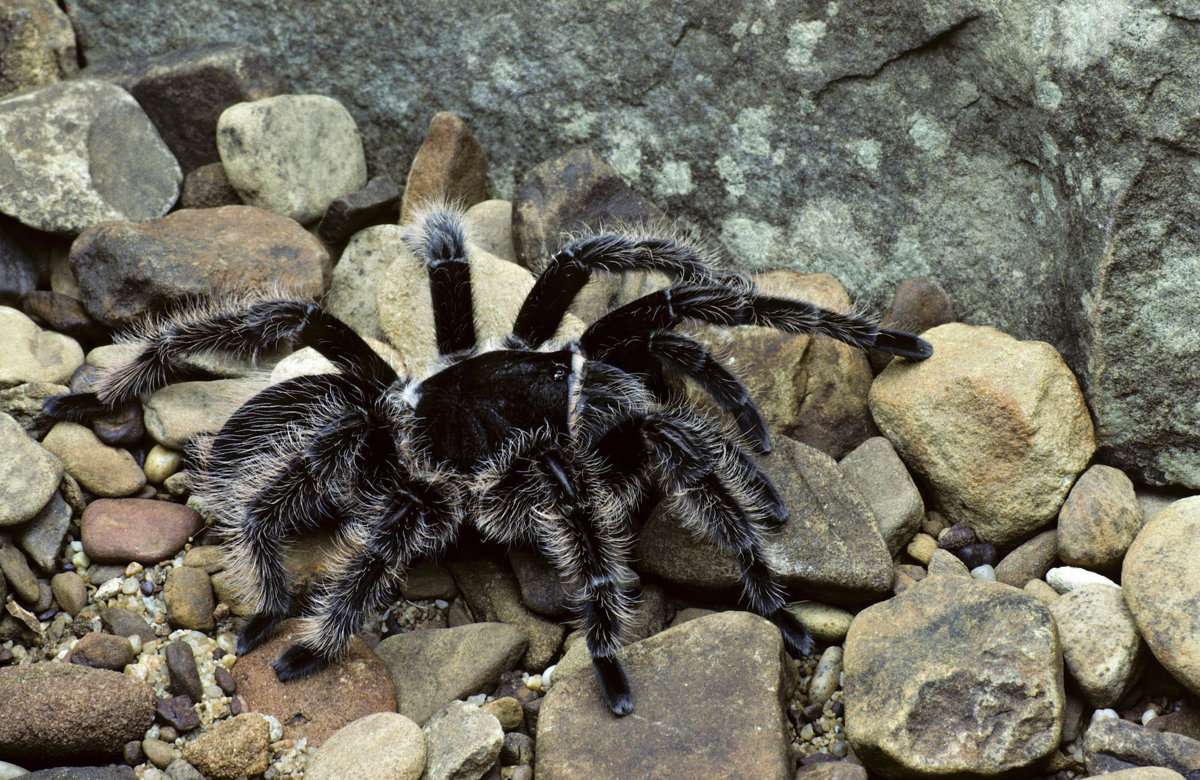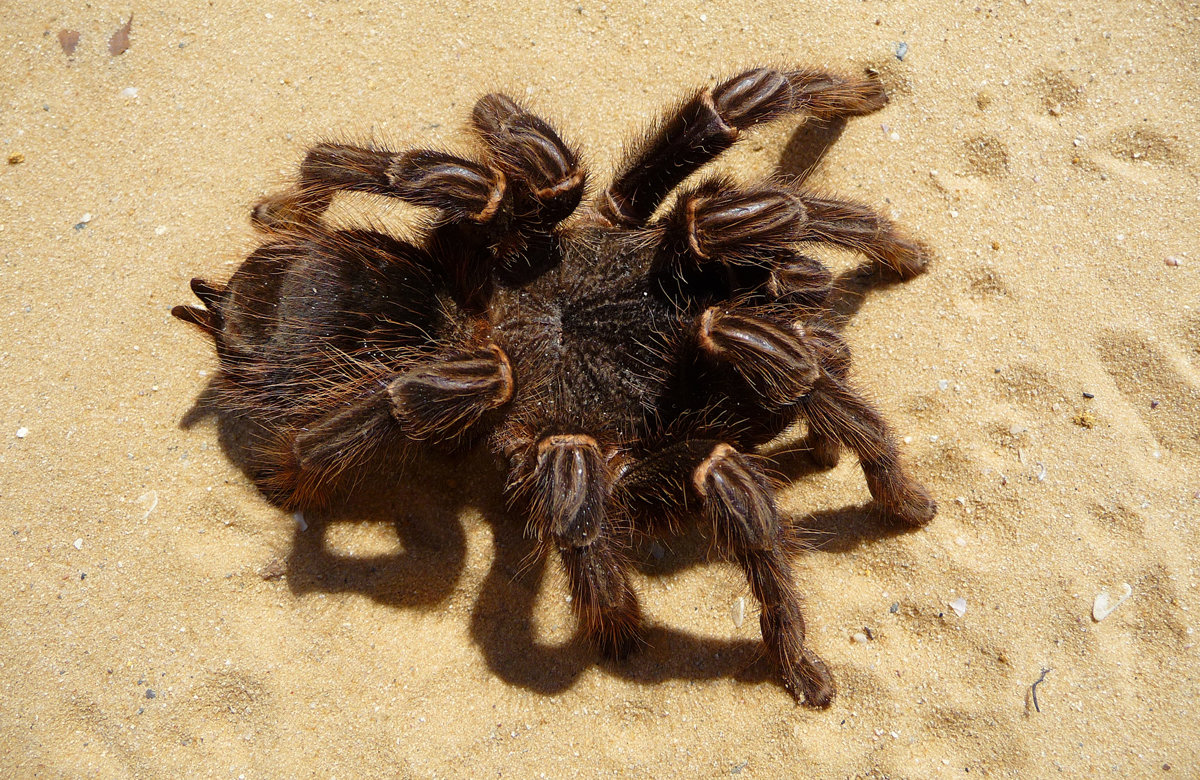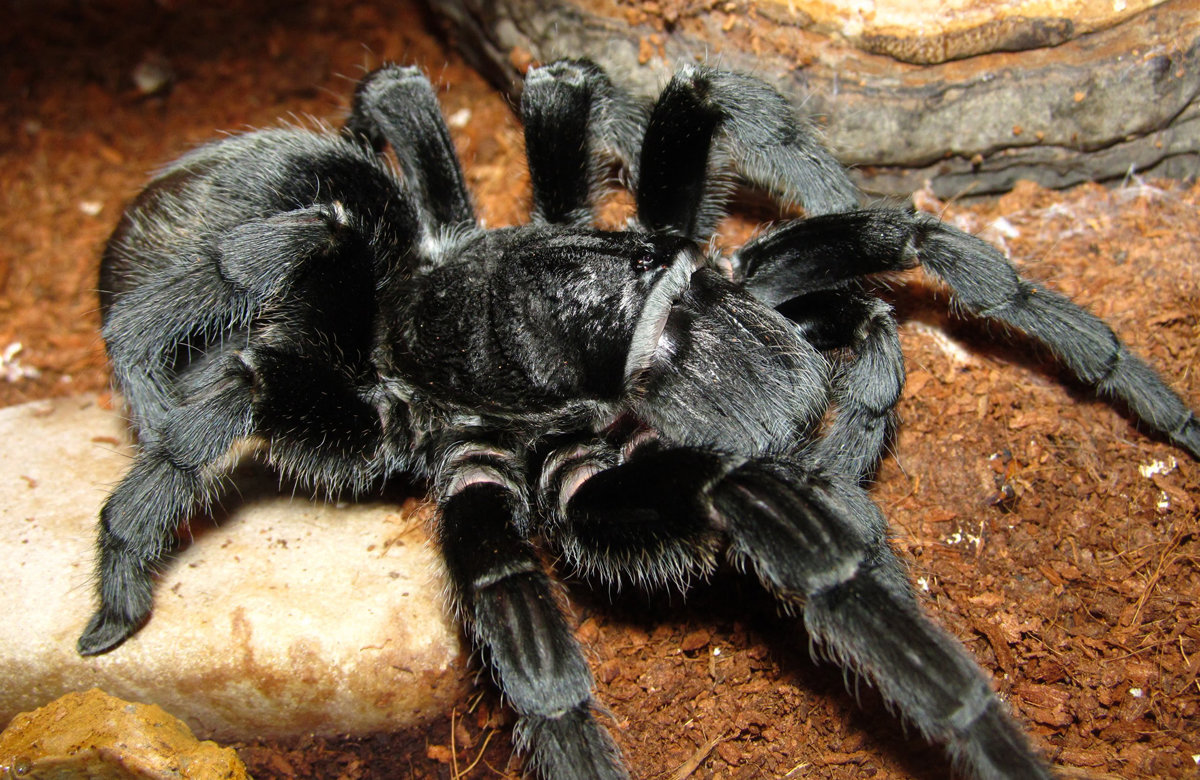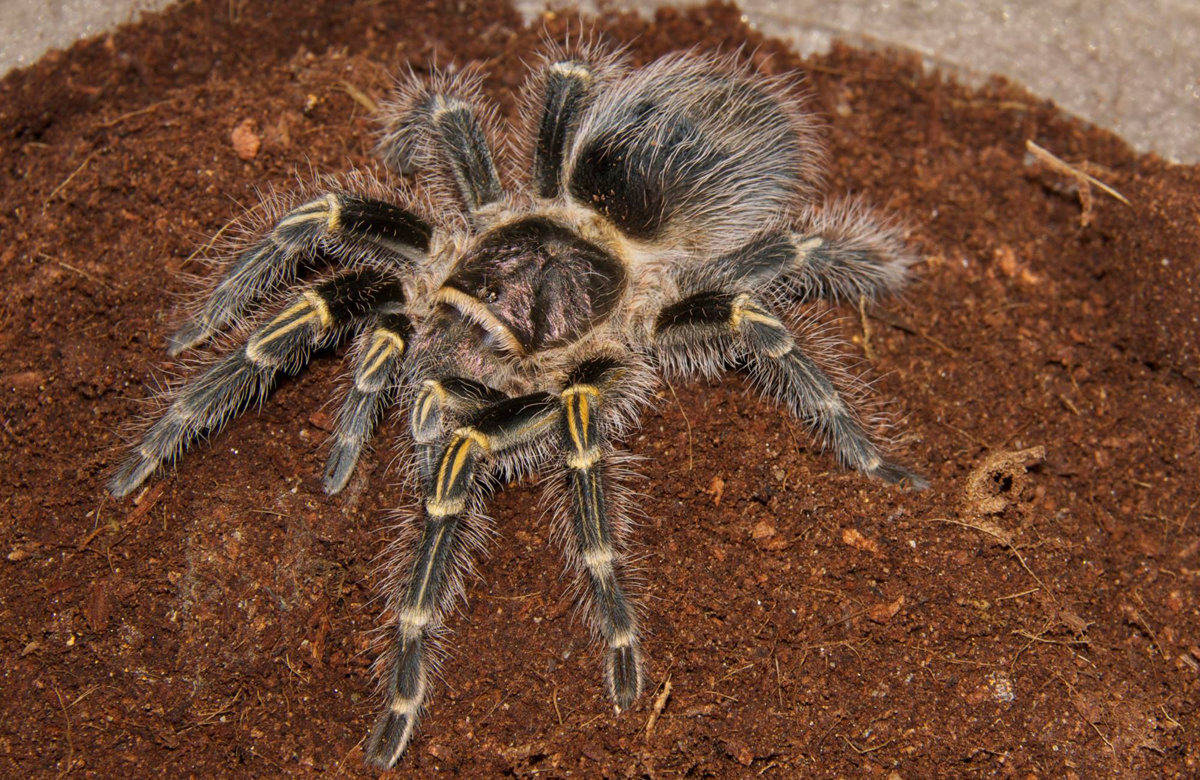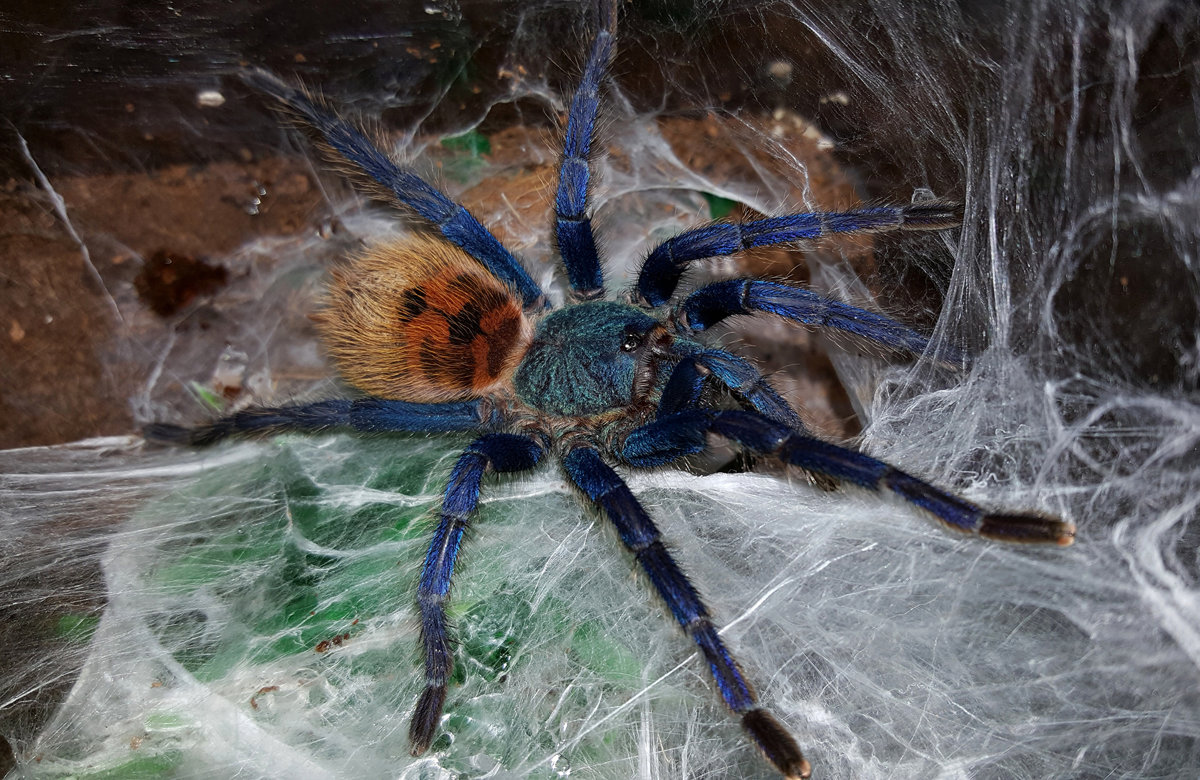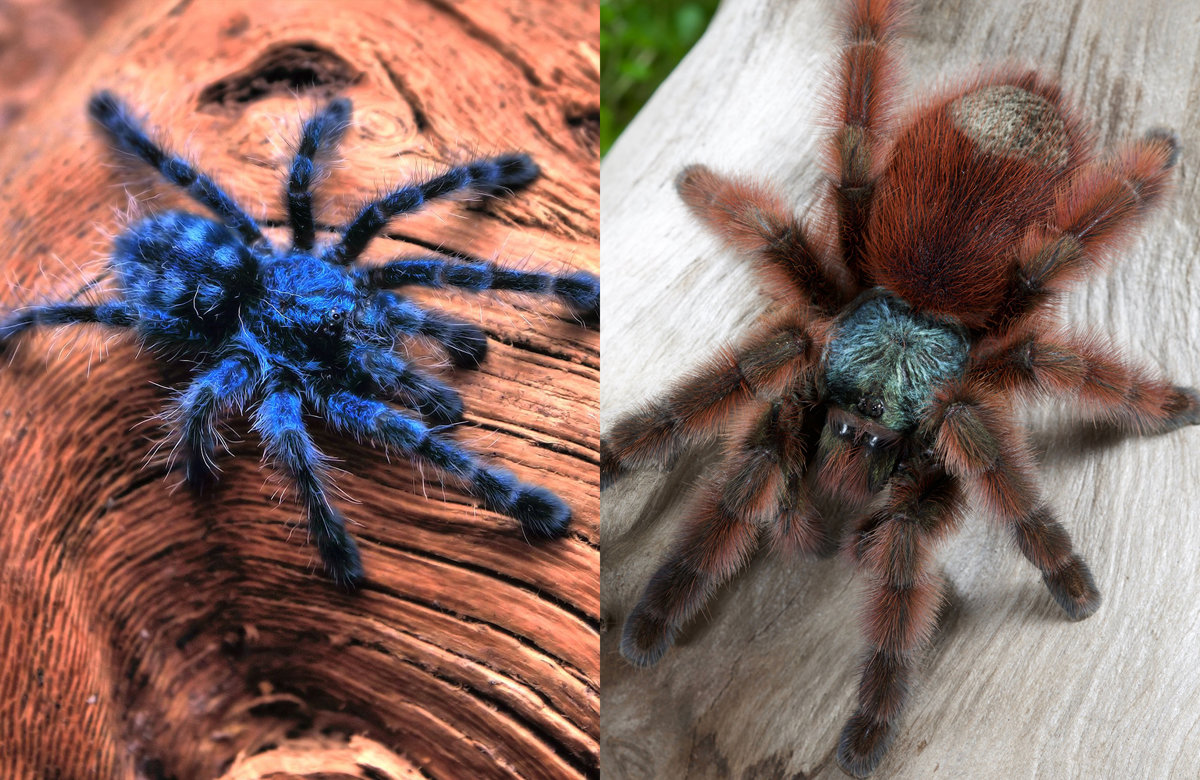BEGINNERS TARANTULAs
Selection criteria for the first tarantula
1. Accessibility - common in the hobby and well known
2. Easy to care for
3. Inexpensive
4. Docile
5. Doesn't hide - clearly visible
Beginner species
These tarantula species are recommended for beginners to gain insight and experience in the hobby. Most of these tarantulas are terrestrial because they are relatively easier to care for:
1. Curly Hair (Brachypelma albopilosum)
2. Brazilian Salmon Pink (Lasiodora parahybana)
3. Mexican Red Knee (Brachypelma hamorii)
4. Chilean Rose Hair (Grammostola rosea)
5. Brazilian Black (Grammostola pulchra)
6. Chaco Golden Knees (Grammostola pulchripes)
7. Green Bottle Blue (Chromatopelma cyaneopubescens)
8. Antilles Birdeater (Caribena versicolor)
All tarantulas have personalities. Regardless of species, each tarantula has it's own character.

